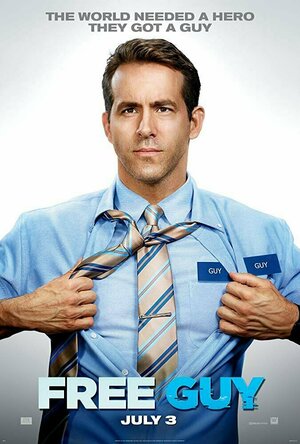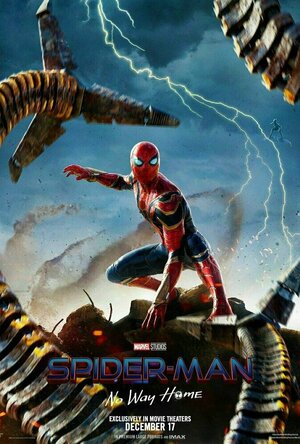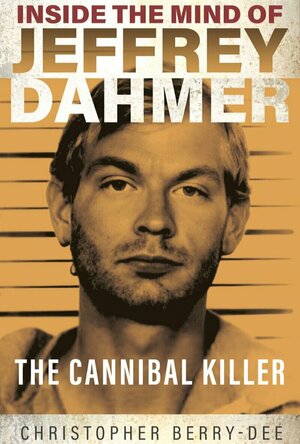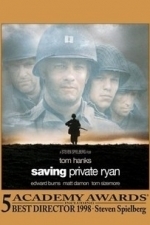
Smobile Lite - For Craigslist
Catalogs
App
*Supports iPad Pro https://www.youtube.com/watch?v=9Uad64SledM Customer Quotes: This is the best...

SMobile - For Craigslist
Catalogs
App
*Supports iPad Pro https://www.youtube.com/watch?v=9Uad64SledM Customer Quotes: This is the best...

Oh She Glows
Food & Drink and Lifestyle
App
We're thrilled to announce that we're one of App Store's Best of 2016! Brought to you by New York...
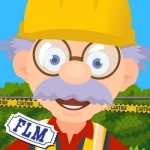
Build With Grandpa
Education and Games
App
Demolish an old building with a wrecking ball, clear the lot with a bulldozer - then design, build,...
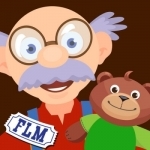
Grandpa's Toy Shop
Education and Games
App
Design, build, and decorate ten different kinds of toys to sell in Grandpa's Toy Shop! After you use...
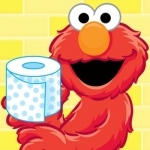
Potty Time with Elmo
Education and Book
App
Elmo reads this animated storybook and song app that will help teach your child about potty training...
BankofMarquis (1832 KP) rated Free Guy (2021) in Movies
Sep 5, 2021
But after it premiered earlier this summer, buzz started to grow - and a few people that I trust recommended it to me, so I decided to check it out.
And…I’m glad I did for FREE GUY is a fun, family-friendly romp with a charismatic Ryan Reynolds anchoring a strong cast in a surprisingly heart-felt film.
Directed by Shawn Levy (NIGHT AT THE MUSEUM), Free Guy tells the story of an NPC (Non-Playable Character in a video game) that becomes sentient.
In the capable hands of Director Levy and actor Reynolds, Guy (his character) is charming, earnest and likeable - a trio of qualities that is hard to pull off, but Levy and Reynolds walk this fine line very well, making Guy a character to root for. They wisely steer away from this character becoming cloying and annoying and just keep him charming and sincere.
This is do-able because Levy and screenwriters Matt Lieberman and Zak Penn wisely choose to not make Guy the emotional center of this film, but rather, Guy is the catalyst who moves the plot (and the other characters) towards their final destinations - all the while keeping Guy (basically) the same. A very smart move that has been used in other, successful films (most notably Michael J. Fox in the BACK TO THE FUTURE FILMS).
Jodie Comer (Killing Eve) and Joe Keery (Stranger Things) are a the heart of this film as 2 video game designers that are trying to find proof that their code was stolen by a heartless Video Game mogul (broadly, comically played by Taika Waititi). Both Comer and Keery are pleasant in their roles and they play off of Waititi (and his chief henchman, played with specific focus - this is a compliment - by Utkarsh Ambudkar). Comer and Keery make it easy for the audience to root for them and Waititi and Ambdukar make it easy for the audience to root against them.
Credit for all of this goes to Director Levy. This film has the same feel as NIGHT AT THE MUSEUM. It doesn’t try to do too much, makes the motivations of the good guys and the bad guys very simple to understand and then drops in the variable (Guy) to mix things up - all done with wit, simplicity and charm - a pretty easy combination, that often gets lost in the machinations, but Levy avoids this trap very, very well.
Finally, I have to point out the performance of Lil Rel Howery as Guy’s buddy…named…Buddy. He is the perfect “Best Friend”. Again, Directed to a simple and direct performance by Levy, not trying to be more than he is, but ends up being a character you care about and root for.
A winning combination of Director, Actors and material, FREE GUY isn’t going to win any Oscars, but it is going to do something that very few films these days do - provide entertainment for the entire family.
Letter Grade: A-
8 stars (out of 10) and you can take that to the Bank(ofMarquis)
Phillip McSween (751 KP) rated Spider-Man: No Way Home (2021) in Movies
Dec 26, 2021
Acting: 10
Stakes are extremely high here which could fall short on screen with weaker performances from the cast. The crew doesn’t disappoint here, both new and old. Tom Holland and Zendaya give you absolute gold, both during the high times and especially the low. I haven’t gotten this emotional over a Spider-Man movie since 2004’s Spider-Man 2.
But Willem Dafoe. Willem Dafoe, Willem Dafoe, Willem Dafoe. It felt like he was playing with an entirely different set of cards, all Aces. His performance was hands-down one of the best I’ve seen in a superhero film and one of the best I’ve seen all year. I absolutely couldn’t get enough of the impact he brought to this movie. Definitely brings the emotion out of you.
Beginning: 8
The movie picks up right where Far From Home leaves off. If you remember what happened at the end of that one, you will recognize that the third allows them to jump right into the conflict. Things start quickly, but not quite perfectly. I know this can be a challenge to do, but I’m wondering if they could have used the first ten minutes to cut to the meat of the story quicker. As it stands, it did take a bit of time for things to pick up.
Characters: 10
Cinematography/Visuals: 10
Conflict: 10
I haven’t been this satisfied with superhero action scenes since Avengers: Endgame. Man oh man, I wish I could say more but just know this: If you came to see some hardcore webslinging action, you will not be disappointed in the slightest. Everything is high stakes when you have a multitude of baddies involved. If the action wasn’t enough, you get taken on an emotional rollercoaster as Peter Parker is faced with a number of tough decisions throughout the movie.
Entertainment Value: 9
Memorability: 10
Pace: 8
Plot: 7
Perhaps the only thing that could have used just a tad bit of a brushup here. Mind you, this is off of one watch, so I could feel a bit differently if I go back and watch again. Then again, my motto is always, “If I can’t understand it the first time…” Yes, there is a lot to take in here and there are some things the film will ask you to take on face value. To me, the characters got on board with the craziness of what was happening a little too easily for my taste. Definitely could have been a bit more development there. For what it’s worth, the story was mostly solid and moved in fluid fashion.
Resolution: 10
Overall: 92
I don’t always enjoy writing reviews, even when it’s a good one. Here I am at the end of my Spider-Man: No Way Home review and there is so much more that I want to say. Some movies are impactful, others iconic. This one is damn near legendary. Phenomenal job by director Jon Watts who is quickly becoming a legend in my eyes.
Laura Doe (1350 KP) rated Inside the Mind of Jeffrey Dahmer: The Cannibal Killer in Books
Mar 12, 2022
I’ve never read this author before but am aware of some of his other books and I think that this book was a good one to start with. I liked that we delved into Dahmer’s childhood and found some possible triggers from there but also that the author reinforced that not every child that suffers a specific trauma in their childhood becomes a serial killer, as I think it is important that the reader is reminded of this each time.
I also liked how there was a chapter for each of the victims and also in the appendix there were the charges in more detail for each victim too. Far too often when reading or watching documentaries about serial killers their victims are glossed over and forgotten while their killer’s name is remembered.
There were a few things that I disliked about this book, the main one being the whole chapter that seemed to be dedicated to slagging off psychiatrists and psychologists. While psychology is not an exact science and different people in the profession can come to different conclusions, I feel that the author spent too many pages trying to prove his point. I also felt that a lot of contempt for the profession was coming through in the writing, which, as somebody who wants to become a psychologist, is not something that I appreciated. I understand that everyone has their opinion on it, but I felt that far too much time was spent trying to get his point across.
There were also a few mistakes that made it hard to make sense of a few things, I understand that it has only just been published and there will be a few mistakes (there was a repeated word in a sentence that wasn’t needed) but when it is an obvious mistake with a date (in the Anthony Hughes chapter it says that he was last seen on 24th September 1991 and then 2 chapters below it says that his family were notified of his death on 5th July 1991) it makes for very confusing reading.
I also found that a lot of the time Christopher Berry-Dee referred to the book written by Brian Masters, I’m unsure if this was only because he hasn’t spoken to Dahmer in person while Masters did but at times I felt like I should have just picked up his book instead. I also found that sometimes the author seemed to boast about which serial killers he had met in real life when he didn’t need to.
Overall, I liked the humour in the book and found the writing style easy to get on with. It wasn’t a pleasant book (what book about a serial killer is?) but it was well written. I would pick up other books by this author in the future. Thank you to The Motherload book club on Facebook for the opportunity to win this book in a giveaway and the publisher Ad Lib for my copy!
RəX Regent (349 KP) rated Saving Private Ryan (1998) in Movies
Feb 25, 2019 (Updated Feb 25, 2019)
Winner of five Academy Awards, including Best Director for Spielberg, Best Cinematography, and Sound, which was astonishing, even by today's standards, it failed to win Best Picture, losing out to Shakespeare In Love. Shakespeare In Love! Don't get me wrong, it's a good film, but easily forgettable compared to Ryan, only proving yet again that if you touch upon the British monarchy you get Oscars.
The film is a fictional account of four brothers, all serving in the U.S. Army, three of which were killed in action on or around the D-Day landings. The fourth, James Ryan played by Matt Damon is somewhere in Europe, and Tom Hanks with his platoon are sent to bring him home, to spare his mother anymore heartache.
Tom Hanks, who was also snubbed at the 1998 Oscars for his perfect performance as Captain Miller, the everyman who was losing himself in the horrors of war, underplayed his role perfectly. He is believable on every level, emotionally, physically and has a sense of subtly with makes him of Hollywood's greats.
The action is visceral, gritty and horrifying. But never played for crass effect. Scenes of soldiers intestines spilling out, limbs flying a sunder and brutal killing left, right and centre are recreated for one purpose. To truly demonstrate the horrors of war, and to change our perceptions of the global conflict which had almost become a joke, a setting for gung- ho action films, where the Yanks reign supreme and single-handedly win the war.
This shows troops crying, hurting and making decisions which should not be made under any moral circumstances, but you understand why, whether you agree or not. There is no doubt that Spielberg is not innocent of making an American film, but it is about as even-handed as you might expect, with the exception of Tora! Tora! Tora! or The Longest Day.
So, the action is first-rate, graphic and perfectly toned to recreate to horror of the last century's greatest and most of destructive conflicts. But that's only half the story.
The other half is the talking, reminiscing and the almost sepia tone is more than a little cloying. The U.S. General's monologues, which seem to consist almost entirely of Lincoln quotations are overly sentimental, erring on the side of sloppy patriotism rather than Jingoism, which is hardly a bad thing but it isn't good either.
The civilian scenes, such as Mrs Ryan, washing a plate as she sees the car drive down to road to inform her of her sons deaths are so sentimental that they jar against the realism of the war scenes. It's not so much contrast as it is as extreme as black and white.
The action is obviously interspersed, as all war films are, with rest stops and moments of talking, pondering etc., but the scenes drag on too long and disrupt the tone of the film. On the other hand, the direction is brilliant when explaining the situations during and around the action, but Spielberg seemed to think that we needed these sloppy and often boring moments, such as The Church, and the outside the cafe in Ramelle, to express the emotional torment of the characters, but I think that these scenes are so boring and pointless that I' can hardly remember them, as my attention drifts off during them! But I do have an understanding of the soldiers, and this was achieved, quite adorably without these scenes.
Overall, this is a film of two halves if ever there was one. The battle scenes and the journey through war-torn France are brilliant, gritty and educational, but the scenes of American sentimentality are in danger of derailing the whole film. Many feel that is the best war film of all time. I do not agree, favouring Black Hawk Down over this, but I would be remiss if I didn't acknowledge that Blank Hawk Down owes a debt to Saving Private Ryan, by opening the door to the gritty war dramas of the naughties and to the style itself.
This film is on of the most important contributions to cinema ever, and has done so much to finally show to true nature of WWII and war in general. But even though I would rate this 10/10 if it was just for the war scenes, the slop just gets in the way and devalues what should have been perfection.
